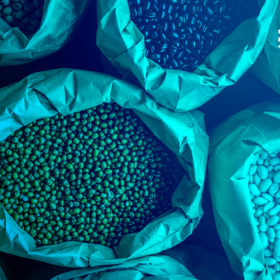Para comenzar por lo básico, podemos definir la logística de una manera sencilla diciendo que es la disciplina mediante la cual conseguimos una distribución eficiente de los productos de una empresa con el menos costo posible. Si ahondamos en el significado de la logística, podemos decir que ésta trata de organizar los flujos de mercancía y sus flujos de información asociados de la manera más rentable posible para las empresas.
A continuación puedes encontrar una serie de conceptos que creemos son importantes si quieres entender mejor nuestro sector o el trabajo concreto que realizamos en Milestone:
Cadena de suministros
Entender en qué consiste la gestión de la cadena de suministros, es uno de los primerísimos pasos para entender la razón de ser de la logística y poder hacerse una idea de la cantidad de agentes que intervienen en los procesos. Para que puedas aprenderlo de la manera más gráfica y amena posible, aquí tienes este vídeo:
Lead time
El lead time puede traducirse directamente como “tiempo de entrega”. Debe diferenciarse el lead time de entrega, que es el que aquí aplica, de otros lead time, como el de producción, por ejemplo. En nuestro caso, hace referencia al tiempo de entrega del producto a transportar, es decir, el tiempo que transcurre desde que el cliente emite el pedido o la orden de transporte hasta que la mercancía es entregada en el punto acordado, que no tiene porqué ser donde se encuentre el distribuidor final.
Incoterms
El término proviene de International commercial terms, que son el conjunto de reglas internacionales que determinan el alcance de las cláusulas comerciales incluidas en el contrato de compraventa internacional. Su propósito es el de proveer un grupo de reglas internacionales para la interpretación de los términos mas usados en el Comercio internacional. Con los incoterms se regula hasta dónde llega la responsabilidad de las partes implicadas en el proceso de transporte. Puedes consultarlos en el gráfico que proporcionamos en este mismo sitio web.
Esperamos que esta introducción a la terminología logística te sea de ayuda. La semana que viene, te traeremos nuevos conceptos relacionados con el sector y que, seguro te interesará conocer.[:en]Even if you are not a logistics professional, you’ll have at least a vague idea about what we, the ones that work in getting the products to the final customer, do. But probably you are missing some technical language. It’s good that you learn some words, so you will understand better some parts of the logistics process, parts that you didn’t know or you misunderstood.
To get started with the very basic, we can define logistics in a simple way telling that is the discipline of managing an efficient delivery of the products of a company with the lowest cost. If we go deeper in the meaning of logistics, we can say that it is about organizing de merchandise flows and the information flows associated to it, in the most profitable way for the companies.
Here you will find some concepts that we believe are important if you want to understand our field better or to get to know what we do in Milestone exactly:
Supply chain
The very first step for understanding the purpose of logistics is to understand what the supply chain management is about. So to learn it in an easier and funnier way, just watch this video:
Lead time
We must differentiate between delivery lead time and other lead times, like the manufacturing lead time, for example. That way the delivery lead time is the amount of time that goes by since the client makes the order until the goods are delivered at the agreed point. Have in mind that this place is not always where the final distributor is.
Incoterms
This term stands for International commercial terms, the international regulations which determine the reach of the commercial clauses included in the international buying and selling contract. Its purpose is to provide us with a group of international set rules to interpret the most commonly used terms in international trade.
The Incoterms set the limits of responsibility of the agents involved in the shipping process. You can consult them in this graphic available in our website.[:]
 Español
Español



